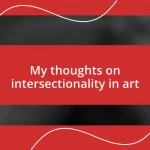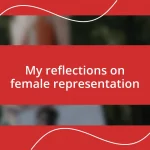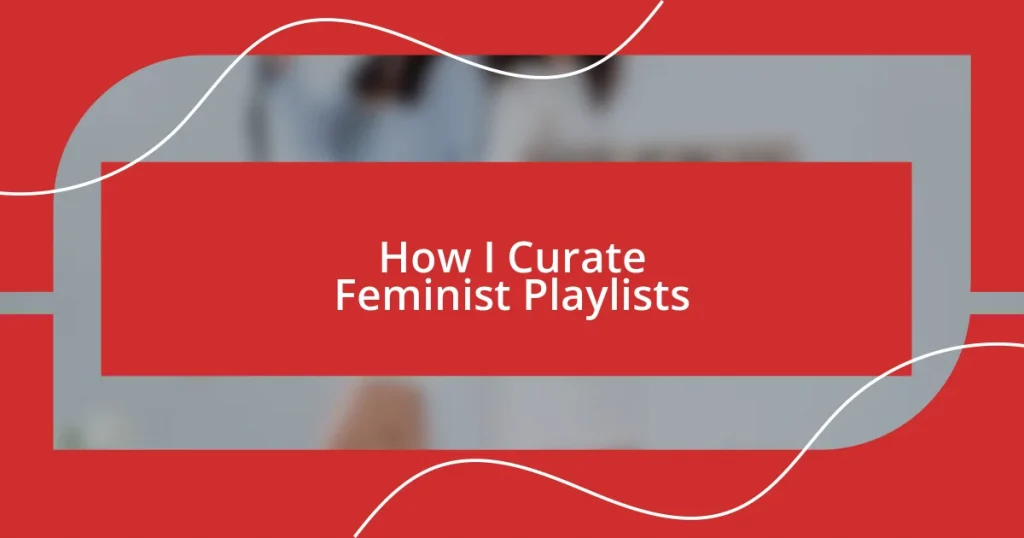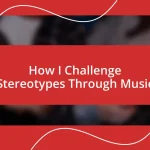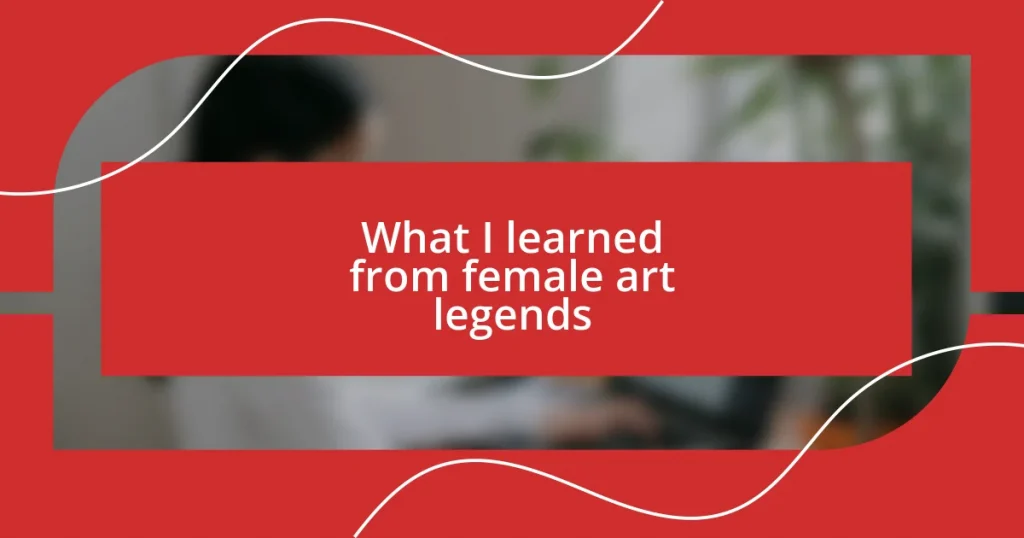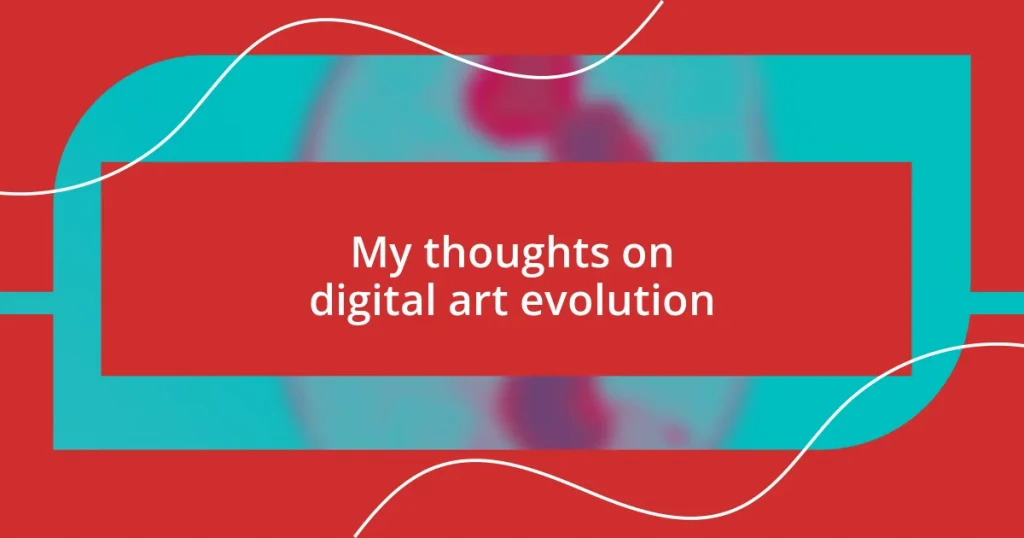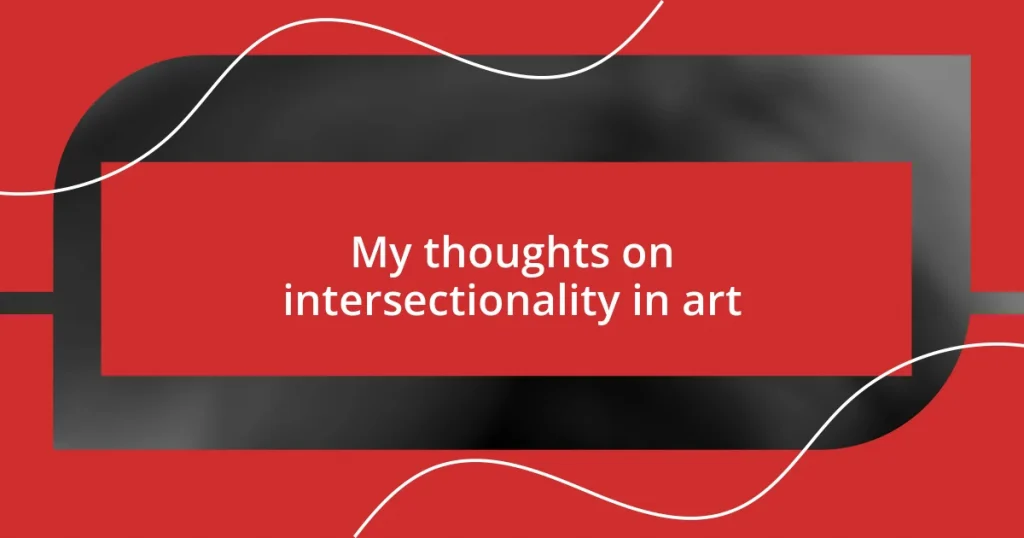Key takeaways:
- Feminist music culture serves as a powerful tool for advocacy, fostering community and resilience through shared experiences and vulnerabilities.
- Curating playlists involves intentional goals such as inclusivity, empowerment, and emotional resonance, aiming to educate and uplift diverse voices.
- Engagement through sharing playlists and fostering dialogue enhances community connections, allowing for deeper understanding of individual and collective narratives in feminist music.
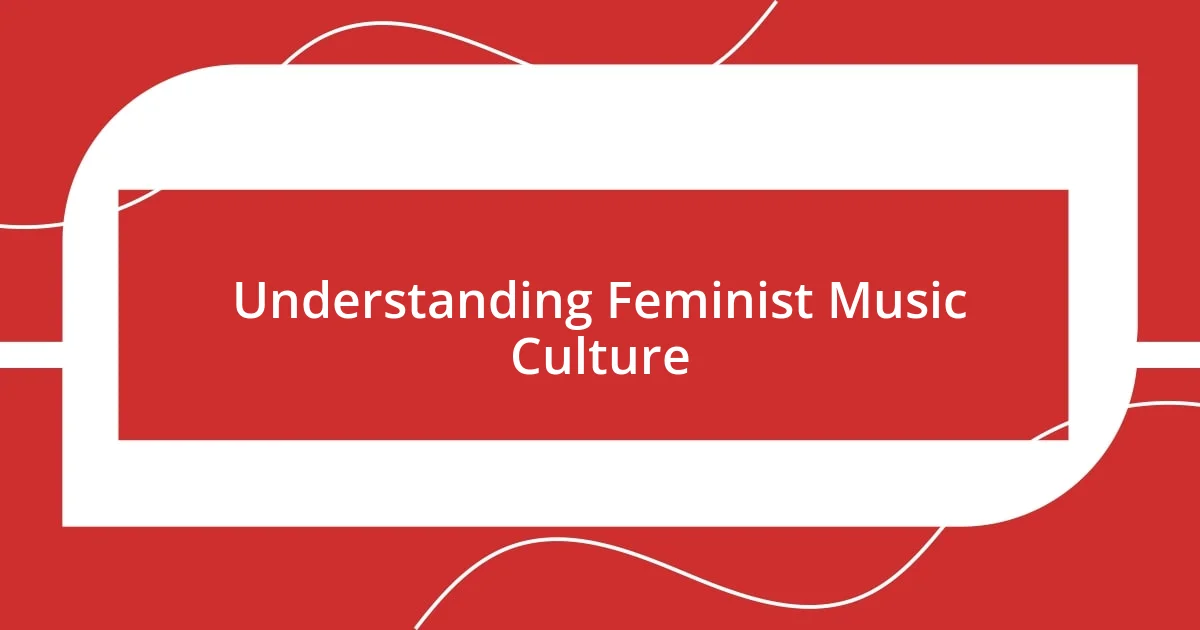
Understanding Feminist Music Culture
Feminist music culture embodies a rich tapestry of voices and experiences that challenge societal norms. I remember the first time I heard a song that made me feel empowered—“Rebel Girl” by Bikini Kill. That moment sparked my curiosity about how music can serve as a powerful tool for advocacy and change.
When we dive into feminist music, it’s essential to recognize the way artists express their struggles, triumphs, and aspirations. I often find myself pondering: how do these musicians brave enough to share their truths inspire others to do the same? This shared vulnerability creates a profound sense of community, reminding us that we’re not alone in our experiences.
Music doesn’t just entertain; it has the potential to provoke thought and ignite passion. For instance, during a recent gathering, an artist covered an old protest anthem, and it felt like a revival—a moment where we all collectively resonated with the fight for equality. Moments like these showcase how songs can bridge generations, continually spurring conversations about feminism and the ongoing quest for justice.
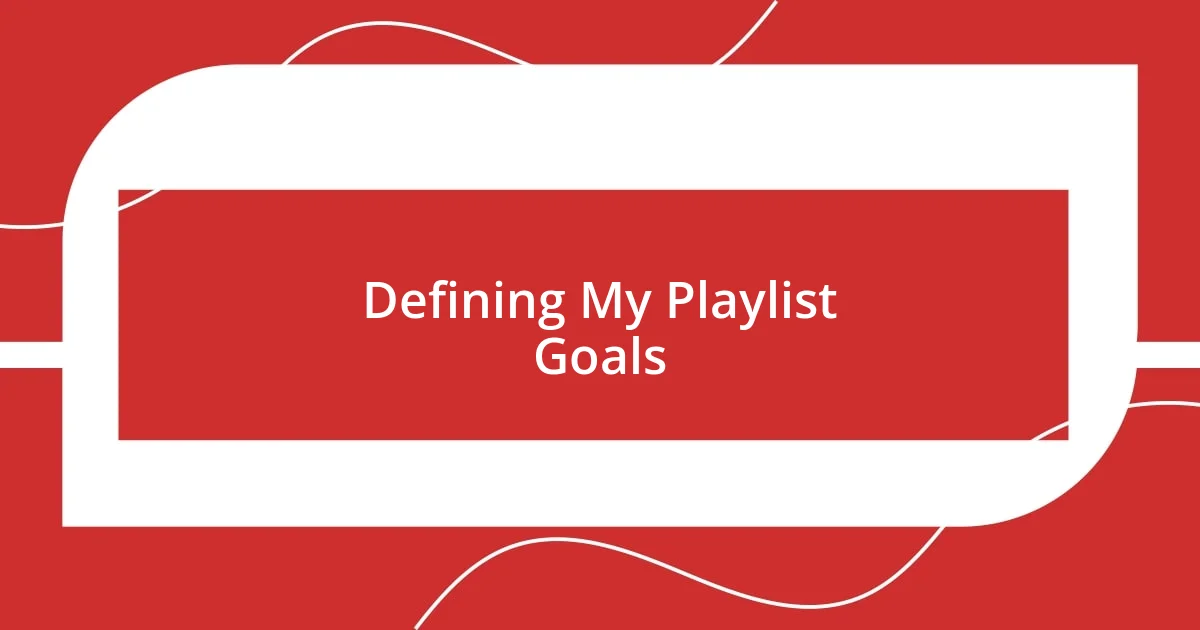
Defining My Playlist Goals
Defining my playlist goals often stems from a combination of personal reflections and the desire to uplift diverse voices within the feminist movement. I’ve realized that when curating a playlist, it’s not just about the songs themselves, but about the larger messages they convey. I always aim for my playlists to resonate emotionally, encouraging listeners to reflect on their own experiences and to feel empowered in their identities.
Here’s how I approach my playlist goals:
- Inclusivity: I strive to feature artists from varied backgrounds, ensuring that different perspectives are heard.
- Themes of Empowerment: Each song should inspire confidence and resilience.
- Challenging Norms: I look for tracks that question societal expectations and spark dialogue.
- Emotional Resonance: The songs need to evoke strong feelings, whether it’s joy, anger, or hope.
- Personal Connection: I often include tracks that have personally impacted me or have a special memory attached.
By focusing on these aspects, I’m able to create playlists that not only entertain but also educate and empower listeners. Each time I revisit these playlists, I’m reminded of the artists’ bravery and the collective strength in our stories.
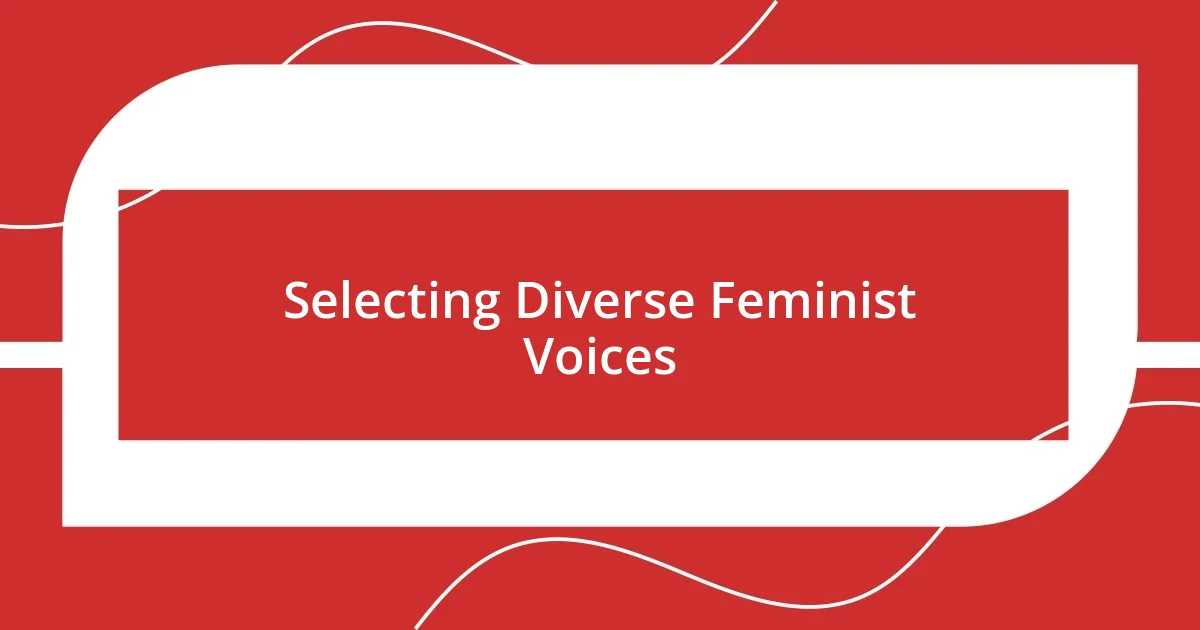
Selecting Diverse Feminist Voices
Selecting diverse feminist voices is a vital part of curating playlists that resonate with a broader audience. I love exploring artists from different cultural backgrounds and genres, like incorporating a powerful rap track followed by an indie rock anthem. Each artist brings unique experiences that can challenge and expand our understanding of feminism, enriching the narrative and making it more inclusive. For example, hearing songs by Indigenous women has completely altered my perspective on intersectionality in feminist discourse.
When I curate playlists, I often consider the historical and social contexts of each artist. I remember discovering a punk band that was vocal about their experiences with mental health and social justice issues. Their raw honesty struck a chord with me, making me realize how important it is to showcase artists whose work directly addresses these themes. It’s about amplifying voices that have been historically marginalized and ensuring they’re part of the conversation.
Moreover, I like to include a mix of established artists and up-and-coming musicians. There’s something refreshing and exciting about introducing lesser-known songs that can surprise listeners. I once added a newcomer whose lyrics about resilience and self-acceptance transformed the mood of the entire playlist. By doing this, I feel like I’m creating a space for growth and discovery, inviting everyone into a world where we can all learn and be inspired by each other.
| Artist | Genre |
|---|---|
| Bikini Kill | Punk Rock |
| Lizzo | Hip Hop/Soul |
| Rupi Kaur | Spoken Word |
| Sister Rosetta Tharpe | Gospel/Rock |
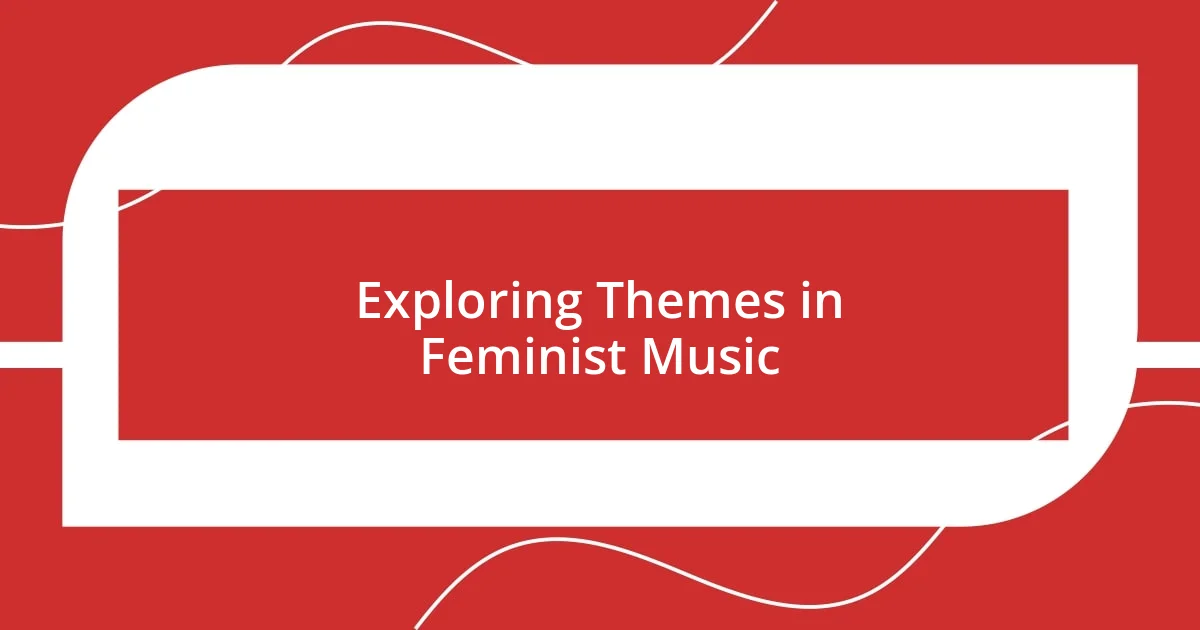
Exploring Themes in Feminist Music
Exploring themes in feminist music allows for a deep connection between artists and listeners, often evoking powerful emotions. For instance, I remember when I first listened to a song about body positivity by a little-known artist. It made me reflect on my own struggles with self-image, and I realized how important it is for music to address these intimate experiences. It’s incredible how a single track can foster vulnerability and encourage listeners to embrace their true selves.
Another poignant theme that frequently emerges in feminist music is the concept of resilience in the face of adversity. I once stumbled upon a ballad that discussed overcoming systemic oppression, and it instantly struck a chord with me. The artist’s raw vulnerability and determination were palpable, pushing me to think about my own life challenges. Isn’t it fascinating how music can serve as a rallying cry, making us feel more united in our struggles while inspiring us to overcome them?
In addition to empowerment and resilience, I find that feminist music often explores complex relationships and the dynamics of love. One song that particularly moved me told the story of a woman reclaiming her agency after a toxic relationship, something I could relate to on many levels. It raises the question: how does love shape our identities and experiences? Delving into these narratives not only broadens my understanding of feminism but also deepens my connection to the music and its messages.
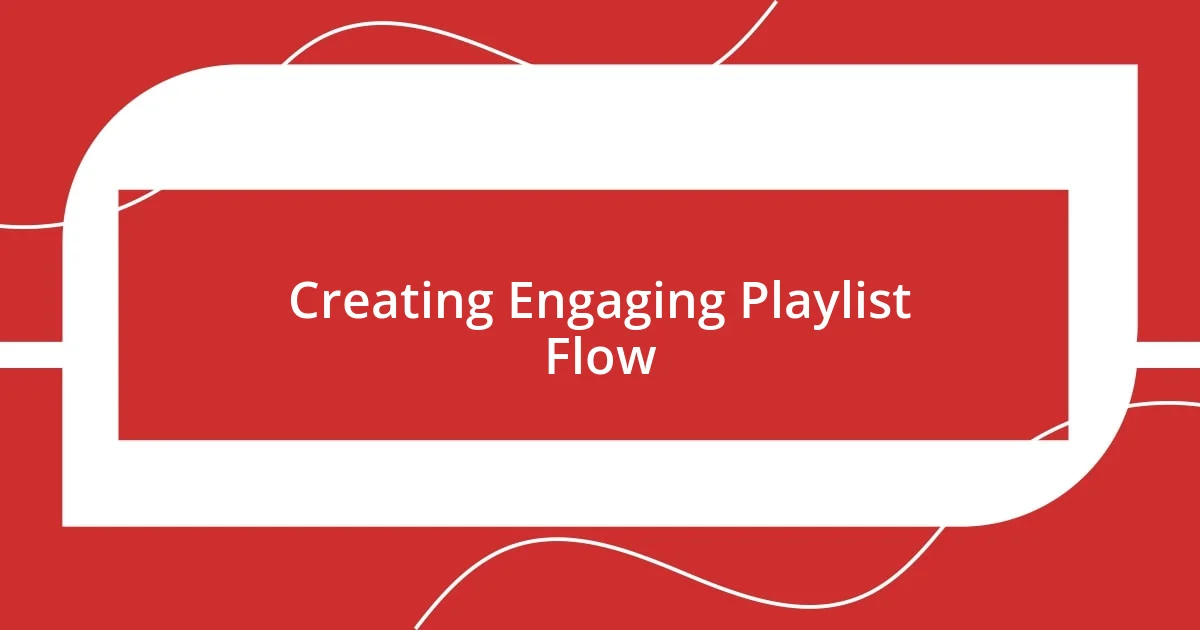
Creating Engaging Playlist Flow
Creating an engaging playlist flow is all about crafting a journey for the listener. Personally, I pay close attention to the sequence of songs to ensure they create an evolving emotional landscape. For example, starting with an upbeat anthem helps to lift the spirits, and then transitioning into a slower ballad allows for deep reflection. Isn’t it amazing how a sudden change in tempo can evoke different feelings and thoughts?
I also consider the themes that connect each track, which can enhance the overall narrative of the playlist. When I was working on a playlist centered around self-discovery, I deliberately placed songs that dealt with personal struggles before moving on to empowering tracks. This approach not only made the experience relatable but also fostered a sense of resolution and growth. Have you ever felt the relief of listening to a triumphant song after wallowing in something more somber?
Another important aspect is maintaining a sense of surprise and contrast. I try to include unexpected genres or tempos at certain points to keep the listener engaged. For instance, I once paired a haunting acoustic piece with a high-energy pop song, which invigorated the flow and challenged the listener’s expectations. These rich juxtapositions not only reflect the complexity of feminist experiences but also make the playlist an engaging adventure. How do you think we can balance consistency with surprise in our playlists?
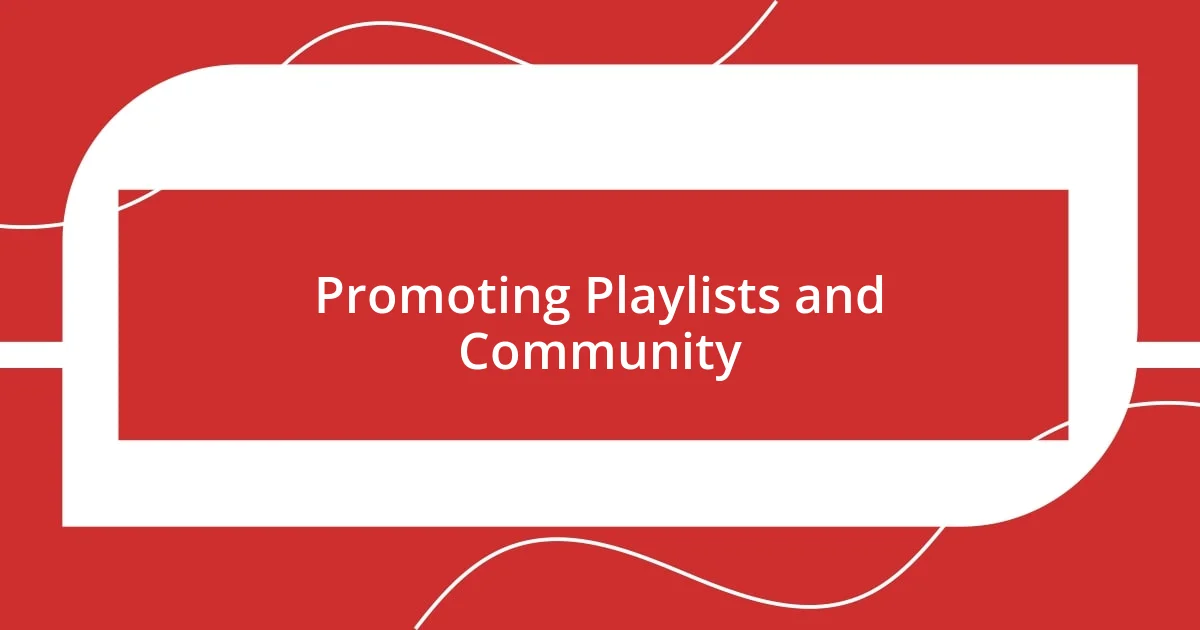
Promoting Playlists and Community
I’ve found that sharing feminist playlists can be an empowering way to build community. For instance, when I created a playlist for International Women’s Day, I not only shared it online but also invited friends to add their own favorite tracks. The joy and pride I felt as our playlist grew was unmatched; it turned into a collective expression of our diverse experiences and voices. Have you ever witnessed how music can create bonds and ignite conversations among people from different backgrounds?
Engagement doesn’t stop at just sharing; it’s about fostering ongoing dialogue. I remember hosting a listening party where we gathered to discuss the themes of our favorite songs. It was incredible to hear everyone’s perspectives and feelings. Some shared their personal stories of empowerment tied to specific tracks, and I realized how our interactions sparked deeper connections and understanding. How often do we take the time to listen—not just to music but to each other’s stories?
Promoting these playlists can also extend into online spaces, where communities can form around shared musical interests. I started a Facebook group specifically for discussing feminist music, and it’s become a vibrant hub for exchanging ideas and celebrating lesser-known artists. I’ve seen firsthand how this digital space can amplify voices that often go unheard. Isn’t it gratifying to be part of a collective that celebrates and elevates diverse narratives through the power of music?

Evaluating the Impact of Playback
Evaluating the impact of playback is essential for understanding how music resonates with listeners. When I listen to my feminist playlists, I pay attention to the emotional response they provoke. I once played a playlist in a café setting, and I vividly remember seeing people’s moods shift as different songs played; one minute, they were deep in conversation, and the next, a powerful anthem sparked a joyous sing-along. Isn’t it fascinating how certain tracks can transform the atmosphere?
I’ve noticed that the playback experience doesn’t just depend on the songs selected but also on the environment in which they’re played. During a road trip with friends, we cranked up a playlist filled with feminist anthems. It was thrilling to observe how the collective energy shifted during those moments — empowerment swirled in the air like confetti. How often does the right song at the right moment elevate our senses and create lasting memories?
The volume and quality of playback are also crucial elements. I once hosted a small gathering where we listened to tracks through high-quality speakers, and the difference was palpable. The nuances and emotions were so much clearer, and I could see my friends leaning in, truly engaged. I believe that having a vibrant listening experience can deepen connections with the music and the shared themes within. Why is it that music seems to resonate more deeply when we can fully immerse ourselves in its sound?


